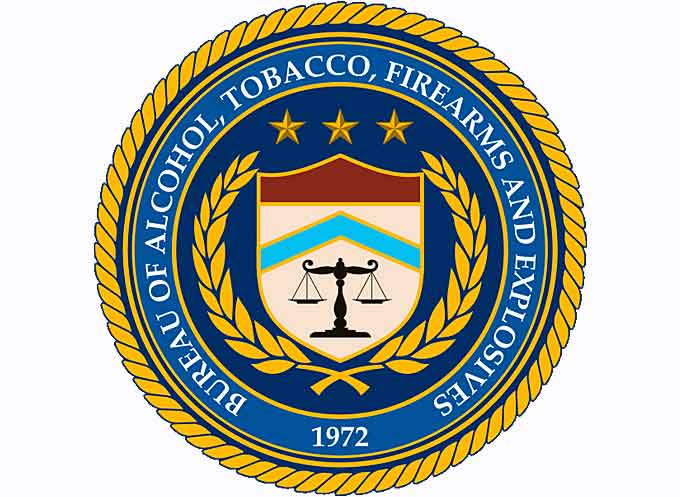
The Bureau of Alcohol, Tobacco, Firearms and Explosives (ATF) has released firearms trace data for all U.S. states and territories for calendar year 2017.
A key component of the Bureau of Alcohol, Tobacco, Firearms and Explosives’ (ATF) enforcement mission is the tracing of firearms on behalf of thousands of federal, state, local and foreign law enforcement agencies.
Firearms trace data is critically important information developed by ATF.

ATF has prepared state-by-state reports utilizing trace data which is intended to provide the public with insight into firearms recoveries.
Firearm traces are designed to assist law enforcement authorities in conducting investigations by tracking the sale and possession of specific firearms.
Law enforcement agencies may request firearms traces for any reason, and those reasons are not necessarily reported to the Federal Government.
Not all firearms used in crime are traced and not all firearms traced are used in crime.
The firearms selected for tracing are not chosen for purposes of determining which types, makes or models of firearms are used for illicit purposes.
The firearms selected do not constitute a random sample and should not be considered representative of the larger universe of all firearms used by criminals, or any subset of that universe.
Firearms are normally traced to the first retail seller, and sources reported for firearms traced do not necessarily represent the sources or methods by which firearms in general are acquired for use in crime.
(Learn More. ATF protects the public from crimes involving firearms, explosives, arson, and the diversion of alcohol and tobacco products; regulates lawful commerce in firearms and explosives; and provides worldwide support to law enforcement, public safety, and industry partners. Courtesy of the ATF HQ and YouTube.)
ATF’s National Tracing Center (NTC), is the nation’s only crime gun tracing facility, gathers the data.
Trace data relates to firearms recovered by law enforcement. For calendar year 2017, the NTC traced more than 400,000 firearms.
In 2017, 322,078, firearms were recovered and traced in the United States and its territories, an increase of 32,855 from 2016.
California had the most firearms recovered and traced, 41,527.
- In 2016, California was also the largest recovery state.
- The majority of the traces involved 9 mm, again consistent with 2016.
- The top firearm types recovered were pistols, followed by revolvers, rifles, and shotguns.
- The average age of possessor in 2017 was 35.
- The time to crime for 2017 was 9.30 years, which is a decrease from 9.79 years in 2016.
 The tracing numbers for 2017 were an 11.3% increase over the tracing numbers for 2016.
The tracing numbers for 2017 were an 11.3% increase over the tracing numbers for 2016.
The overall increase in the number of firearms recovered and traced indicates increased participation in the tracing program by our local, state and federal law enforcement partners.
Trace information provides valuable investigative leads to law enforcement and can link a suspect to a firearm in a criminal investigation.
Firearms traces help identify potential firearms traffickers by:
- Detecting in-state, interstate and international firearms trafficking patterns
- Including the sources and types of crime guns
- Specific trend data for ATF and its law enforcement partners
- Information on the movement of a firearm from the manufacturer or importer through the distribution chain to identify its first retail purchaser
The released firearms trace data offers a description of firearms recovered and traced in each state along with the source states of the firearms recovered.
In addition to recovered and traced firearms per state, the report includes:
- Recovery location information
- The average time from first purchaser to recovery in a crime, and
- The criminal offense associated with the firearm.
ATF is dedicated to reducing firearms trafficking and firearms-related violent crime.
(Learn More. ATF Los Angeles Field Division was busy in 2017. Covering California’s Central Coast, from the Mexican border to the counties of Los Angeles, Orange, Riverside, San Bernardino, Ventura, Santa Barbara, San Luis Obispo, San Diego and Imperial, ATF LAFD spent the year removing firearms, drugs and career criminals from these communities. Personnel were also called upon to assist in San Francisco’s takedown of violent criminals, the mass shooting in Las Vegas, such natural disasters as Irma in Puerto Rico and Harvey in Texas, and many more nationwide investigations. ATF LA is committed to reducing violent crime by identifying and targeting specific criminal activity in organizations and the shooters in our communities. As vicious street gang members and relentless motorcycle gangs members continue to populate SoCal, ATF continues to infiltrate and take out the leaders of some of the more notable gangs. ATF LA is also very proactive in investigating violations of federal law pertaining to arson and explosives. To this end, ATF works closely with local fire departments and police bomb squads. Recently ATF participated in the investigations involving arsonists in the San Diego and Los Angeles areas and was instrumental in the recovery of evidence that led to the criminal procedures. We look forward to another successful year eradicating violent criminals from our society. Courtesy of ATF HQ and YouTube.)

















